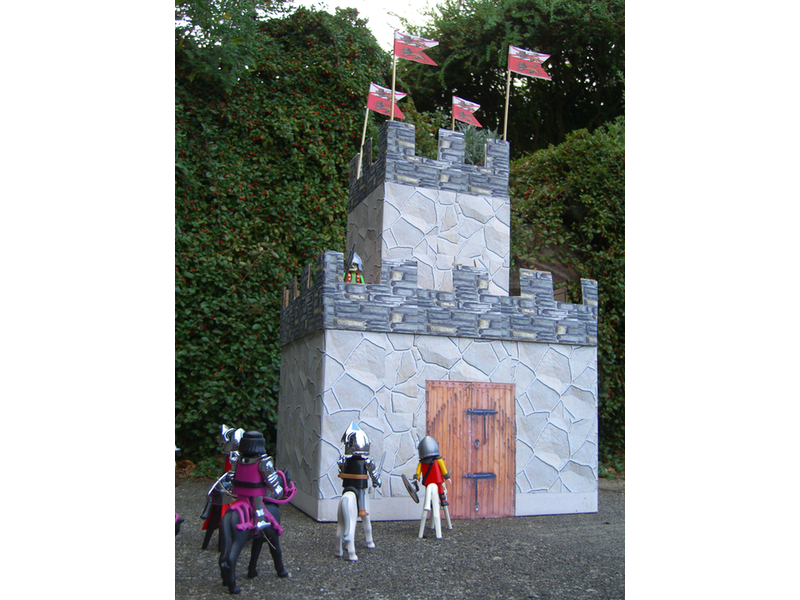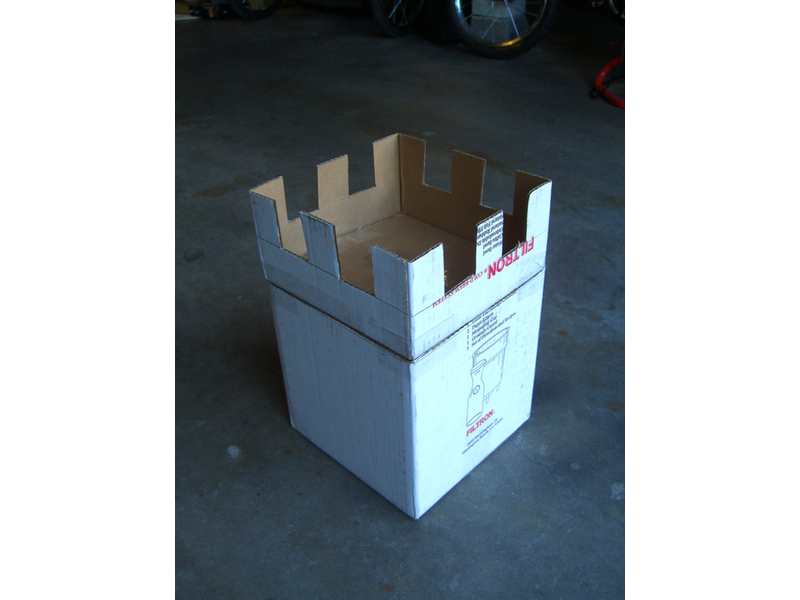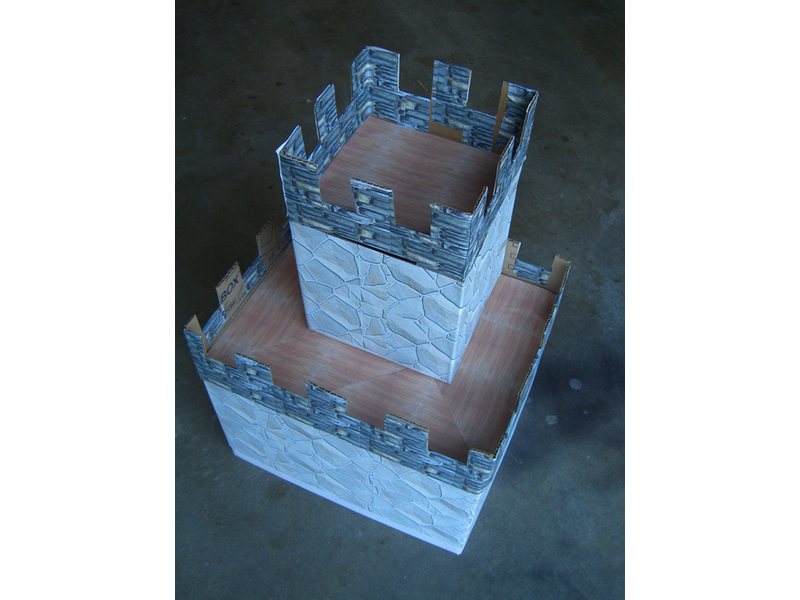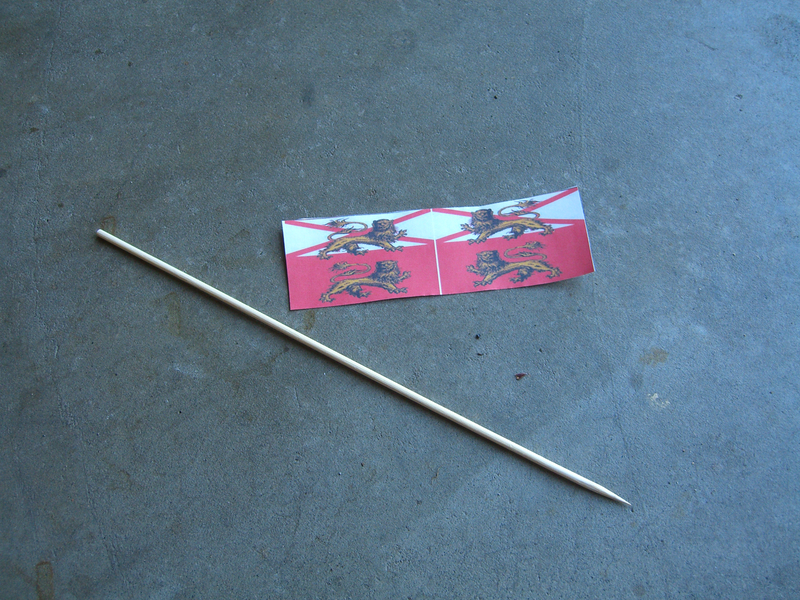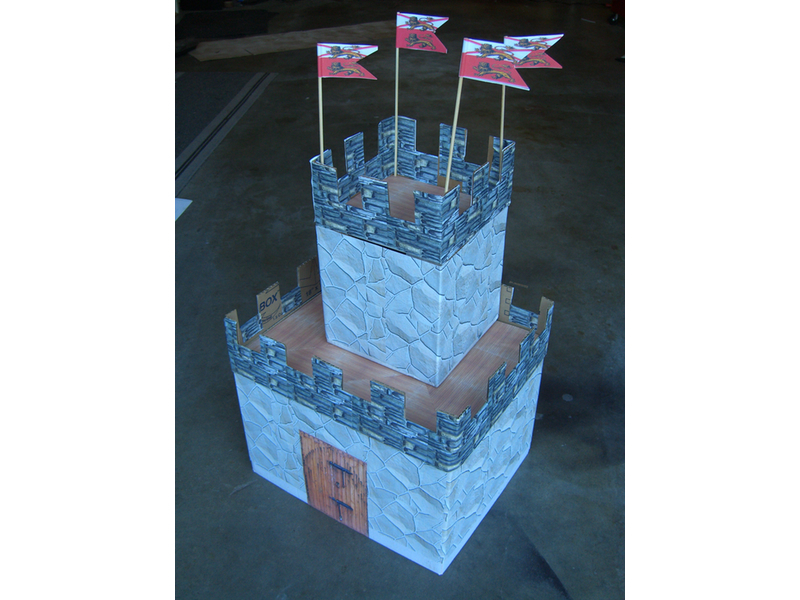If you have kids, chances are at some point you’ve cut a couple of holes in an upside-down cardboard box and called it a “tunnel” for the train set, or a “house” for a doll family. Although kids seem to love them, these impromptu structures tend to be pretty forgettable. I’ve found that with some inkjet prints and spray adhesive, you can turn these quickie buildings into toys that, while still ephemeral, will hold your child’s attention for months rather than hours.
At our house, Playmobil knights and Vikings are all the rage, and while the Playmobil castle and fortress sets are thoughtfully designed and constructed, they are also pretty expensive for what will certainly be a short-lived obsession. By the time our cardboard fortress wears out, we’ll be on to the next thing. If not, we’ll just whip up another one for pennies on the dollar compared to commercial sets.



